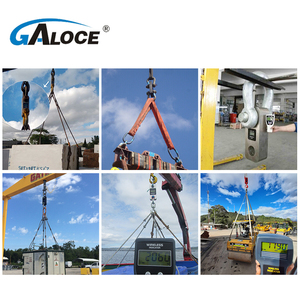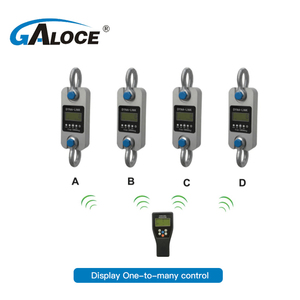
All categories
Featured selections
Trade Assurance
Buyer Central
Help Center
Get the app
Become a supplier

(987 products available)









































Manual dynamometer: This kind of dynamometer is manually controlled. It uses a system lever to measure and provide data. It sends this data to another device through wireless communication. It is preferred because of the ease of use, accuracy, and the feedback offered. Manual types are mostly used during live analysis and testing. Standard places of use are automotive, manufacturing, maintenance, and testing laboratories.
Digital Electronic Dynamometer: These frequently used dynamometers use load cells to measure forces. That is how they compute torque and power. They are popular because of their precision, reliability, and how they help digitize older models. Their usage ranges from academic research to heavy industrial applications.
Universal Testing Machines (UTM): Universal testing machines come with wired dynamometers to measure tensile and compressive forces. They have wireless communication systems. The machines provide data on material strength and elasticity. They are flexible, precise, and suitable for various materials. It is this variability that makes them popular in research and industry labs.
Hydraulic Dynamometer: They are not common. The only time hydraulic dynamometers are used is when liquid power sources are measured by estimating hydraulic forces. Electronic load cells might be fitted to improve accuracy. However, retrofitting is not preferred. These dynamometers are commonly used in industries dealing with hydraulic machinery, such as aerospace engineering and marine. They are valuable in vintage machines.
Machine-mounted dynamometers: These dynamometers integrate with machines, allowing real-time monitoring. They are compact, minimize disruption, and provide immediate data. The ones frequently mounted on motors, pumps, or turbines are machine-based. They are vital in industries where constant monitoring is required, such as manufacturing, power generation, and heavy industries.
Precision: Opt for a device with high accuracy to capture even minor variations in force. Such precision is critical where minute differences affect outcomes. A model with at least +/- 1% accuracy is advised.
Capacity: Choose a dynamometer that can handle the force or load range they deal with. An overburdened instrument will give erroneous readings. Pick one suited to their highest expected measurement.
Response time: A model's ability to give a reading quickly after a load changes is vital in dynamic testing. Instruments that respond slowly may miss key data points, affecting their understanding of material behavior under rapid stress changes. Models offering real-time feedback are ideal for such tasks.
Durability and strength: Strong and durable dynamometers are fit for constant or extreme usage. Constructed with premium materials, they endure wear and tear and stay functioning accurately for more prolonged periods.
Data transmission range: If the testing environment requires distance between the dynamometer and receiver, select a model with a proper transmission range. Instruments with inadequate ranges may lose signals, leading to data gaps.
Environmental resistance: In testing areas with extreme temperatures, humidity, or dust, pick a dynamometer sealed against environmental factors and built to withstand temperature extremes. Examine their resistance to dust and moisture.
In these cases, standard instrument housing may not suffice. A model with proper sealing and environmental shielding could be needed.
Battery life: Consider battery-operated dynamometers. The extended battery duration means longer operation times without recharging, which is vital during long testing sessions.
User interface: Those with easy-to-understand displays and controls cut the learning period, enabling swift operation. Choose a device with basic settings and a clear output display, helping quickly grasp force measurements.
The introduction of wireless dynamometers into the market has changed how industries look at load measurement. The dynamometers simplify the measurement of tension and compression forces in numerous missions. This innovation impacts operating costs hugely. They reduce the time and cost of measuring mechanical systems as they allow instant data transfer. The dynamometers are incorporated into dangerous industrial systems, creating a safer workplace.
Frequent innovation, such as higher accuracy and range, increases demand across sectors. The automotive and aerospace industries push up the need for dynamometers due to their constant wish for improved performance checks.
As diverse industries, including manufacturing and construction, fuse load measurement in quality assurance, the Wireless Digital Lifting Dynamometer market keeps on flourishing. It is because of the drive for maximized production and efficiency in today's commercial atmosphere.
Several businesses, including academic institutions and research facilities, depend on wireless devices for tensile and compressive strength examinations. The convenience and accuracy during experiments boost their value in material examination.
This shift to wireless dynamometers in sectors like automotive and aerospace raises demand for precise instruments. Due to firms prioritizing quality checks and operational performance, dynamometers' role in commercial fitness grows.
Wireless dynamometers enable industries to work safely and smoothly by syncing with smart gadgets. This connection significantly improves system efficiency and promotes broad acceptance across sectors.
Regular calibration: Accurately calibrate the instrument to maintain precise measurements. Use certified weights or standards for routine checks. The dynamometer consistently delivers trustworthy data to stop operating complications from appearing and guarantee correct readings.
Battery care: Check the battery level commonly to stop interruptions throughout performance. Replace or recharge the battery before it dies. Use the instrument without disturbance while measuring. Getting in the habit of changing the battery often ensures steady performance without unexpected downtimes.
Protect from extreme environments: Do not let the instrument come into contact with water, extreme heat, or dust. When using the dynamometer, keep it in a shielded case or cover, as this will keep it from being damaged in tough weather. Minimize the risk of instrument failure and prolong life by reducing exposure to environmental factors. Consider putting protective gear on the instrument.
Regular software checks: If the model depends on wireless transmission, frequently check the software and connections. It makes sure that any bugs or connection problems are fixed. This action protects data transmission and reception accuracy.
Physical checks: Inspect the instrument often for physical wear or damage. Pay close attention to areas that experience the most movement, like cables and load cells. It enables the immediate identification of possible problems, ensuring the instrument stays available for use.
Avoid overload: Never overload the instrument. Always stay within the specified limits of the instrument. This action prevents damage to internal parts and helps the instrument last longer. It further ensures accurate readings and consistent performance in heavy-duty work conditions.
A1: They can measure tension and compression forces. They are preferred for their efficiency in transmitting data wirelessly.
A2: Wireless models regularly check tension and compression forces, so they are more precise than older models.
A3: Wireless models are often manufactured and consistently more accurate, which is an edge over earlier dynamometers.
A4: Simply put, universal testing machines do apply tensile and compressive forces. They often have wireless systems for better convenience and precision.
A5: They are typically applied in manufacturing, construction, research, and quality assurance fields. They are essential for performance testing in these industries.